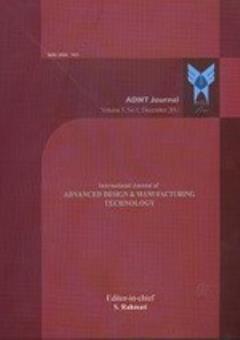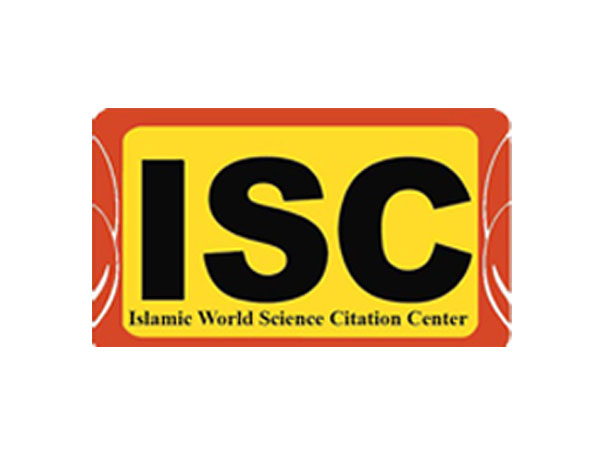About the journal
International Journal of Advanced Design and Manufacturing Technology (ADMT), is an open access double-blind peer reviewed publication which is published by Islamic Azad University Isfahan Branch concerned with new concepts and findings in areas related to mechanical engineering, either empirical or theoretical . The ADMT is a quarterly publication, which publishes original research papers in journal scopes. This journal is following of Committee on Publication Ethics (COPE) and complies with the highest ethical standards in accordance with ethical laws. All submitted manuscripts are checked for similarity through a trustworthy software named iThenticate to be assured about its originality and then rigorously peer-reviewed by the international expert reviewers (Read More...).
Journal of Advanced Design and Manufacturing Technology (ADMT) is indexed in ProQuest, Ebsco, ISC, COPERNICUS, Google Scholar, J-gate, SID, Sherpa Romeo, EZB(Electronic Journal Library) and Researchbib.
-
Open Access Article
1 - Innovative Enhancements in Surface Quality and Hardness of Aluminium Alloy 2024 through an Optimized Burnishing Process
Akbar Hojati *Issue 4 , Vol. 17 , Winter 2024 -
Open Access Article
2 - A Comparative FEM Analysis of a Substituted 3D-Printed U-Joint with PLA and ABS Materials
Mohammad Sajjad Mahdieh * ، Golshid FathinasabIssue 4 , Vol. 17 , Winter 2024 -
Open Access Article
3 - Non-Linear Vibrations of Graphene Nanoplatelet-Reinforced Composite Beams using Non-Local Strain Gradient Theory
Ahmad Haghani *Issue 4 , Vol. 17 , Winter 2024 -
Open Access Article
4 - Application of the Homotopy Perturbation Method to Solve Nonlinear Equations Arising in Oscillatory Systems
Mohammadjavad Mahmoodabadi * ، Neda AmiriIssue 4 , Vol. 17 , Winter 2024 -
Open Access Article
5 - Algorithm Development and Design of Lattice Conical Shell Under Mechanical and Thermal Loads
Behrooz Shahriari * ، Mahdi Sharifi ، Hassan IzanloIssue 4 , Vol. 17 , Winter 2024 -
Open Access Article
6 - The Effect of using a Semi-Automatic Foam Cutting Machine on The Characteristics of Foam Patterns in The Lost Foam Casting
Sadegh Mirzamohammadi * ، Abbas Abbasian ، Seyed Jalal HashemiIssue 4 , Vol. 17 , Winter 2024
-
Open Access Article
1 - Investigating the Effect of Separation Speed and Image Cross-Section Geometry on The Separation Force in DLP Method using FEP and PP Polymer Membranes
Siavash Moayedi Manizani * ، Jamal Zamani ، Mohammad Salehi ، Mohammad Taghi shayestehIssue 3 , Vol. 16 , Autumn 2023 -
Open Access Article
2 - Forecasting Operational Parameters of a Solar Space Heating System using a Novel Multistage Artificial Neural Network
Farnaz Jamadi * ، Behnam JamaliIssue 2 , Vol. 11 , Spring 2024 -
Open Access Article
3 - Dynamic Response of FGM Plates Under Blast Load
reza azarafza * ، puya pirali ، Ali Davar ، majid ghadimiIssue 4 , Vol. 16 , Winter 2023 -
Open Access Article
4 - The Effect of Type and Location of a Phase Change Material (PCM) Layer in a Building Wall on Energy Consumption using Numerical Simulation
Arezoo Soleimani Dashtaki ، Afshin Ahmadi Nadooshan * ، Afshin AbediIssue 4 , Vol. 12 , Autumn 2024 -
Open Access Article
5 - Investigation of The Effect of Notch Tip Radius on Fracture Energy of Charpy in 7075 Aluminium Alloy
Ali Hossein zadeh * ، Mohammad Reza Maraki ، Mohsen SadidiIssue 2 , Vol. 13 , Spring 2024 -
Open Access Article
6 - Microstructure Investigation and Mechanical Properties of Resistance Upset Butt Welded Ti-6Al-4V Alloy
Mahmood Sharifitabar *Issue 3 , Vol. 13 , Summer 2024 -
Open Access Article
7 - A Study on The Effects of Different Pad Materials on Brake System Performance of a High-Capacity Elevator by FEM Simulation
Mohammad Sajjad Mahdieh * ، Farshad Nazari ، Ali Riyadh KhairullahIssue 4 , Vol. 16 , Winter 2023 -
Open Access Article
8 - Fabrication, Testing and Analysis of Composite Lattice Panels Under Three-Point Bending Load
Mahdi Farhadi ، Ali Davar * ، Mohsen Heydari Beni ، Jafar Eskandari JamIssue 1 , Vol. 17 , Spring 2024 -
Open Access Article
9 - Investigation of Compressive Stresses of Stainless Steel 316L Diamond Lattice Structures Under the Effect of Spherical Connections Produced by SLM Additive Manufacturing
Behnam Ahmadi Roozbahani ، AliAkbar Lotfi Neyestanak *Issue 4 , Vol. 16 , Winter 2023 -
Open Access Article
10 - Investigation of the AFM Indenter’s Geometry Effect On Micro/Nano Biological Cells’ Indentation
Yousef Habibi Sooha ، Moharam Habibnejad * ، Zahra RastegarIssue 4 , Vol. 13 , Autumn 2024










